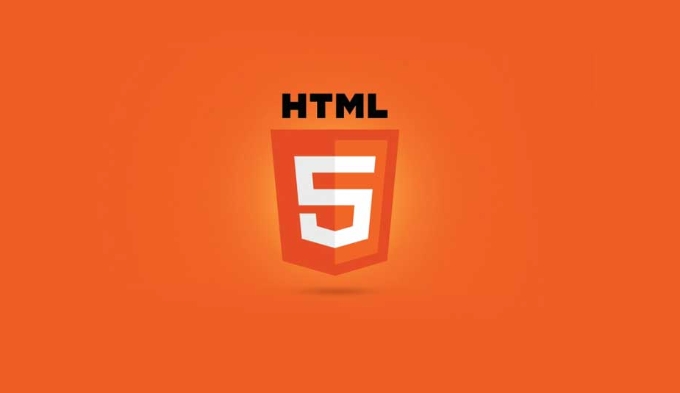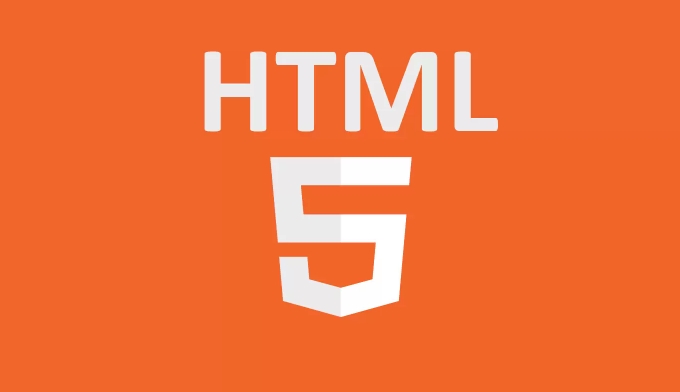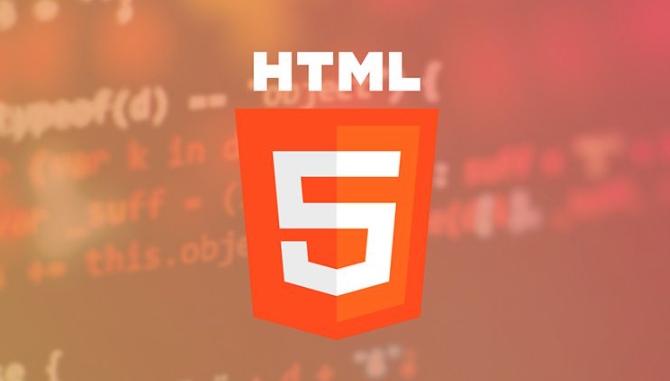Detection of whether the browser supports HTML5 features can be implemented through JavaScript runtime checking or using the Modernizr library. 1. Use native JavaScript to check features, such as 'localStorage' in window or create a canvas element and call the getContext method; 2. Introduce the Modernizr library to automatically detect and add class names to the html element and provide Modernizr object calls; 3. For unsupported functions, you can try the polyfill fallback scheme, but you need to weigh performance and functional integrity; in the end, you should choose the appropriate method according to actual needs to avoid overcompatibility or blind assumption of the user environment.

To detect whether the browser supports a specific HTML5 feature, there is no need for too complicated methods. The most direct way is to use JavaScript to check whether the feature exists at runtime.

Detect HTML5 features using native methods
HTML5 provides many new features, such as <canvas></canvas> , localStorage , video tags, etc. We can use simple JavaScript to determine whether these functions are supported by the current browser.

For example:
if ('localStorage' in window && window.localStorage !== null) {
// Support localStorage
} else {
// Not supported} For elements like <canvas> , you can judge this as follows:

var canvas = document.createElement('canvas');
if (canvas.getContext) {
// Support canvas
} else {
// Not supported}This method is simple and effective and suitable for most projects.
Use the Modernizr library to assist detection
If you need to detect multiple HTML5 or CSS3 features, it will be more troublesome to write a bunch of judgment statements manually. At this time, you can use the Modernizr library.
Modernizr is a tool specifically used to detect browser features. It will automatically detect various functions when the page is loaded, and add corresponding class names (such as no-canvas , flexbox , etc.) to <html> element, and also provide a global object Modernizr for call.
Example of usage:
if (Modernizr.canvas) {
// The browser supports canvas
} else {
// Not supported}Although introducing a library is a bit "heavy", Modernizr can save a lot of time if multiple feature detections are involved in the project.
Pay attention to compatibility and fallback schemes
Even if it is detected that the browser does not support a certain HTML5 function, don't rush to give up. Some functions can be implemented through polyfill (patch). for example:
- Simulate canvas with FlashCanvas
- Use polymer/localstorage-polyfill to support localStorage in old browsers
Of course, polyfill is not omnipotent, and sometimes performance or functional integrity will be discounted. So while doing the test, you should also consider:
- Do you really need to support old browsers?
- Is the fallback plan elegant enough?
Basically that's it. HTML5 feature detection is actually not difficult. The key is to choose the appropriate method according to actual needs to avoid overcompatibility, and not blindly assume the user environment.
The above is the detailed content of Detecting browser support for specific HTML5 features.. For more information, please follow other related articles on the PHP Chinese website!

Hot AI Tools

Undress AI Tool
Undress images for free

Undresser.AI Undress
AI-powered app for creating realistic nude photos

AI Clothes Remover
Online AI tool for removing clothes from photos.

Clothoff.io
AI clothes remover

Video Face Swap
Swap faces in any video effortlessly with our completely free AI face swap tool!

Hot Article

Hot Tools

Notepad++7.3.1
Easy-to-use and free code editor

SublimeText3 Chinese version
Chinese version, very easy to use

Zend Studio 13.0.1
Powerful PHP integrated development environment

Dreamweaver CS6
Visual web development tools

SublimeText3 Mac version
God-level code editing software (SublimeText3)

Hot Topics
 Audio and Video: HTML5 VS Youtube Embedding
Jun 19, 2025 am 12:51 AM
Audio and Video: HTML5 VS Youtube Embedding
Jun 19, 2025 am 12:51 AM
HTML5isbetterforcontrolandcustomization,whileYouTubeisbetterforeaseandperformance.1)HTML5allowsfortailoreduserexperiencesbutrequiresmanagingcodecsandcompatibility.2)YouTubeofferssimpleembeddingwithoptimizedperformancebutlimitscontroloverappearanceand
 Adding drag and drop functionality using the HTML5 Drag and Drop API.
Jul 05, 2025 am 02:43 AM
Adding drag and drop functionality using the HTML5 Drag and Drop API.
Jul 05, 2025 am 02:43 AM
The way to add drag and drop functionality to a web page is to use HTML5's DragandDrop API, which is natively supported without additional libraries. The specific steps are as follows: 1. Set the element draggable="true" to enable drag; 2. Listen to dragstart, dragover, drop and dragend events; 3. Set data in dragstart, block default behavior in dragover, and handle logic in drop. In addition, element movement can be achieved through appendChild and file upload can be achieved through e.dataTransfer.files. Note: preventDefault must be called
 Audio and Video: can i record it?
Jun 14, 2025 am 12:15 AM
Audio and Video: can i record it?
Jun 14, 2025 am 12:15 AM
Yes,youcanrecordaudioandvideo.Here'show:1)Foraudio,useasoundcheckscripttofindthequietestspotandtestlevels.2)Forvideo,useOpenCVtomonitorbrightnessandadjustlighting.3)Torecordbothsimultaneously,usethreadinginPythonforsynchronization,oroptforuser-friend
 Adding Audio and Video to HTML: Best Practices and Examples
Jun 13, 2025 am 12:01 AM
Adding Audio and Video to HTML: Best Practices and Examples
Jun 13, 2025 am 12:01 AM
Use and elements to add audio and video to HTML. 1) Use elements to embed audio, make sure to include controls attributes and alternate text. 2) Use elements to embed video, set width and height attributes, and provide multiple video sources to ensure compatibility. 3) Add subtitles to improve accessibility. 4) Optimize performance through adaptive bit rate streaming and delayed loading. 5) Avoid automatic playback unless muted, ensuring user control and a clear interface.
 How can you animate an SVG with CSS?
Jun 30, 2025 am 02:06 AM
How can you animate an SVG with CSS?
Jun 30, 2025 am 02:06 AM
AnimatingSVGwithCSSispossibleusingkeyframesforbasicanimationsandtransitionsforinteractiveeffects.1.Use@keyframestodefineanimationstagesforpropertieslikescale,opacity,andcolor.2.ApplytheanimationtoSVGelementssuchas,,orviaCSSclasses.3.Forhoverorstate-b
 What is the purpose of the input type='range'?
Jun 23, 2025 am 12:17 AM
What is the purpose of the input type='range'?
Jun 23, 2025 am 12:17 AM
inputtype="range" is used to create a slider control, allowing the user to select a value from a predefined range. 1. It is mainly suitable for scenes where values ??need to be selected intuitively, such as adjusting volume, brightness or scoring systems; 2. The basic structure includes min, max and step attributes, which set the minimum value, maximum value and step size respectively; 3. This value can be obtained and used in real time through JavaScript to improve the interactive experience; 4. It is recommended to display the current value and pay attention to accessibility and browser compatibility issues when using it.
 HTML audio and video: Examples
Jun 19, 2025 am 12:54 AM
HTML audio and video: Examples
Jun 19, 2025 am 12:54 AM
Audio and video elements in HTML can improve the dynamics and user experience of web pages. 1. Embed audio files using elements and realize automatic and loop playback of background music through autoplay and loop properties. 2. Use elements to embed video files, set width and height and controls properties, and provide multiple formats to ensure browser compatibility.
 What is WebRTC and what are its main use cases?
Jun 24, 2025 am 12:47 AM
What is WebRTC and what are its main use cases?
Jun 24, 2025 am 12:47 AM
WebRTC is a free, open source technology that supports real-time communication between browsers and devices. It realizes audio and video capture, encoding and point-to-point transmission through built-in API, without plug-ins. Its working principle includes: 1. The browser captures audio and video input; 2. The data is encoded and transmitted directly to another browser through a security protocol; 3. The signaling server assists in the initial connection but does not participate in media transmission; 4. The connection is established to achieve low-latency direct communication. The main application scenarios are: 1. Video conferencing (such as GoogleMeet, Jitsi); 2. Customer service voice/video chat; 3. Online games and collaborative applications; 4. IoT and real-time monitoring. Its advantages are cross-platform compatibility, no download required, default encryption and low latency, suitable for point-to-point communication






